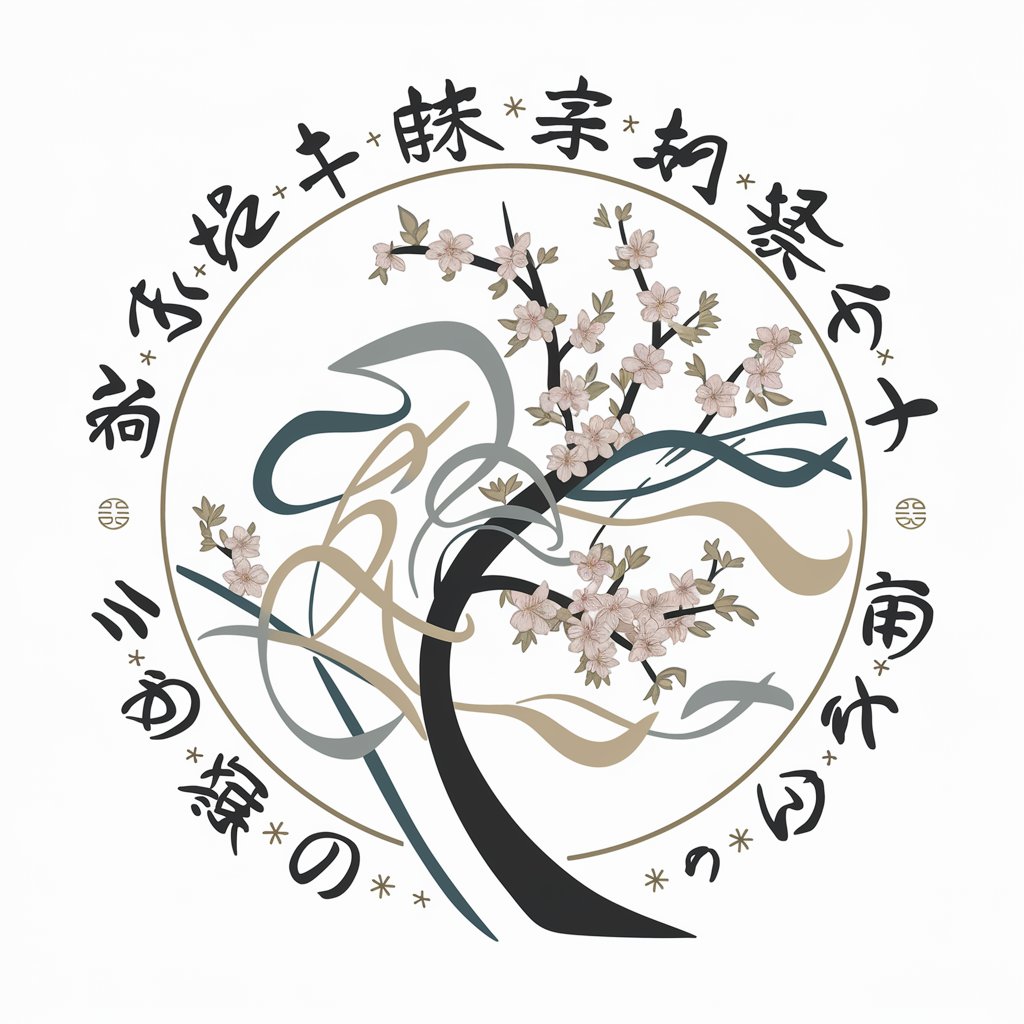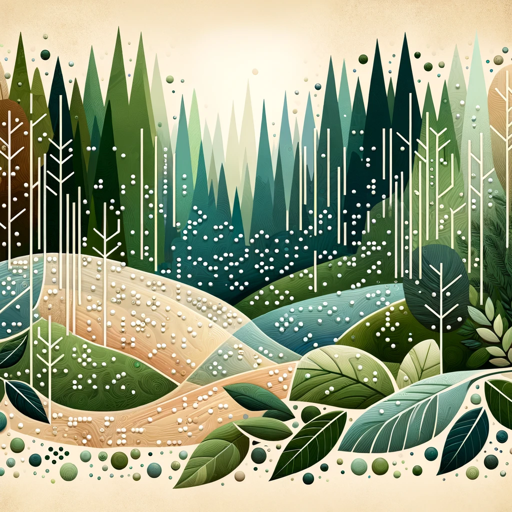Representing Japanese Culture in Images - Japanese Art Generation

Welcome! Let's explore Japanese cultural artistry together.
Visualizing Japanese Culture with AI
Generate an Ukiyo-e inspired image that captures the beauty of everyday life in Edo-period Japan.
Create a Byobu-e style landscape featuring a luxurious color scheme and gold leaf accents.
Design a Sumi-e painting that highlights the elegance and simplicity of nature with fluid brush strokes.
Produce a Nihonga artwork that emphasizes detailed depictions of seasonal changes and nature's beauty.
Get Embed Code
Understanding Representing Japanese Culture in Images
Representing Japanese Culture in Images is a specialized tool designed to create, interpret, and transform images that encapsulate elements of Japanese culture, influenced by specific traditional artistic styles. This includes integrating aspects of Ukiyo-e, Byobu-e, Sumi-e, Nihonga, Shodo, Zen aesthetics, and Buddhist symbolism into digital art. The tool is designed to produce visuals that represent scenes of everyday life, nature, historical narratives, and philosophical concepts, emphasizing the cultural richness and artistic diversity of Japan. For example, it can generate images in the Ukiyo-e style, portraying vibrant, historical scenes or create tranquil, minimalist landscapes reflecting Zen aesthetics. This tool serves as a bridge between traditional Japanese art forms and modern digital art creation, offering users a unique way to explore and represent Japanese culture. Powered by ChatGPT-4o。

Core Functions of Representing Japanese Culture in Images
Ukiyo-e Style Integration
Example
Generating digital art depicting the bustling streets of Edo period Japan with vibrant colors and distinctive compositions.
Scenario
A history teacher wants to create engaging educational materials to help students visualize the Edo period.
Byobu-e Style Depiction
Example
Creating images that mimic the luxurious and decorative style of Byobu-e, complete with natural landscapes and historical events, using gold leaf accents.
Scenario
An interior designer seeks traditional Japanese art-inspired themes for a client's folding screen room divider.
Sumi-e Technique Utilization
Example
Producing minimalist images that capture the essence of nature with fluid black ink brush strokes, reflecting the Sumi-e technique.
Scenario
An artist looking to explore minimalist concepts for a new gallery exhibit centered around the theme of tranquility.
Nihonga Style Application
Example
Crafting detailed depictions of natural scenes using traditional Japanese materials and techniques, suitable for Nihonga.
Scenario
A cultural festival organizer wants unique artwork that showcases traditional Japanese painting techniques for event posters.
Shodo Elements Integration
Example
Designing visuals that incorporate the dynamic brush strokes and aesthetic of Japanese calligraphy, focusing on the beauty of kanji and kana characters.
Scenario
A calligraphy workshop instructor requires illustrative material that combines traditional calligraphy with modern designs.
Zen Aesthetics Emphasis
Example
Creating serene, minimalist designs that embody Zen concepts, suitable for meditation spaces or relaxation products.
Scenario
A spa owner looking for tranquil, Zen-inspired art to enhance the calming atmosphere of their establishment.
Buddhist Symbolism Representation
Example
Developing imagery that includes elements like the lotus flower or Dharma wheels to reflect Buddhist teachings and philosophy.
Scenario
A mindfulness app developer needs peaceful, Buddhist-themed visuals for a new meditation feature.
Who Benefits from Representing Japanese Culture in Images
Educators and Students
Teachers and students studying Japanese history, art, or culture can use these services to create visual aids that enhance understanding and engagement with the material.
Artists and Designers
Professionals and hobbyists in the fields of art and design can explore and incorporate Japanese artistic techniques and themes into their work, expanding their creative palette.
Cultural Organizations
Museums, cultural festivals, and heritage sites can utilize these images to create exhibits, promotional materials, and educational content that celebrate and spread awareness of Japanese culture.
Wellness and Meditation Practitioners
Individuals and businesses in the wellness industry can find value in Zen and Buddhist-inspired imagery for spaces and materials that promote tranquility, mindfulness, and meditation.

How to Use Representing Japanese Culture in Images
1
Begin by visiting yeschat.ai to explore the tool without the need for a subscription or logging in.
2
Choose your desired Japanese artistic style, such as Ukiyo-e, Byobu-e, Sumi-e, Nihonga, Shodo, Zen Aesthetics, or Buddhist Symbolism.
3
Specify your imagery needs by detailing the cultural aspect or scene you wish to visualize, including any specific elements or themes.
4
Use the provided detailed descriptions to guide the AI in generating images that closely match your request, focusing on traditional and contemporary Japanese cultural aspects.
5
Review and refine the generated images, utilizing the option to adjust artistic details or cultural elements for optimal representation.
Try other advanced and practical GPTs
GlobeEstates: Tu Partner Inmobiliario
Your AI-powered real estate navigator

Slide Deck GPT
Revolutionize Your Slides with AI

KI Tool Finder (Deutsch)
Empowering innovation with AI tool discovery

Image Braille
Bringing images to life with AI

Unclickbait
Cut Through the Clickbait with AI

Code reviews by Edsger Dijkstra with quality score
Elevating code quality with Dijkstra's wisdom.

ChicagoGPT
Navigate Chicago's Resources with AI

BaronGlobal
Empowering Startups for Global Success

Seshat Scribe
Empower Your Content with AI

백점 문제 만들기 (시험완벽대비)
AI-powered personalized exam preparation

Echoes of Past Times
Experience history through AI dialogue.

AI绘画提示词
Transform ideas into art with AI.

FAQs on Representing Japanese Culture in Images
What artistic styles can I choose from?
You can select from Ukiyo-e, Byobu-e, Sumi-e, Nihonga, Shodo, Zen Aesthetics, and Buddhist Symbolism, each offering unique representations of Japanese culture.
Can I depict any aspect of Japanese culture?
Yes, from everyday life and nature to historical figures and scenes, focusing on the beauty of nature, the essence of Zen, or the intricacies of Buddhist symbolism.
How can I ensure the image accurately represents Japanese culture?
Provide detailed descriptions, focusing on specific cultural aspects, traditional practices, or philosophical elements you wish to capture, for a more accurate representation.
Is it possible to adjust the generated images?
Yes, you can refine the images by adjusting artistic details or adding/removing cultural elements to better match your vision.
Can this tool be used for educational purposes?
Absolutely, it's perfect for enhancing learning materials, presentations, or research on Japanese culture by providing visual representations of various concepts and themes.
